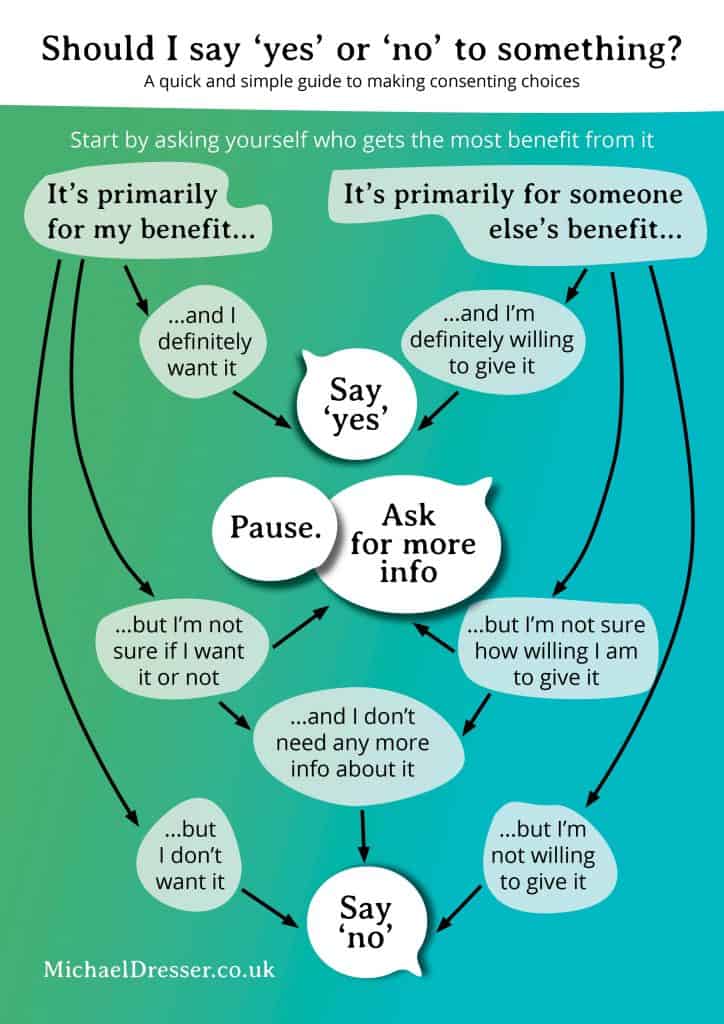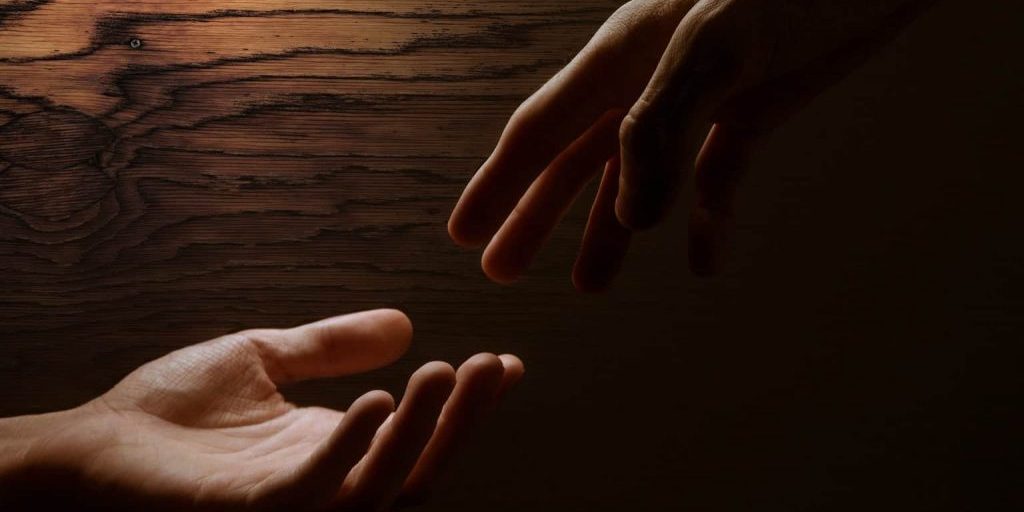
How to tell if you should say ‘yes’ or ‘no’ to something
It's not what you say, it's why you say it. Follow these simple steps and learn how to tell when to say 'yes' or 'no' to something.
Knowing how to say ‘no’ can be a challenge for many of us.
If you’re a people-pleaser you might be all too familiar with saying ‘yes’ when you really mean ‘no’.
What’s the missing piece
While there may be plenty of great tips out there for how to say ‘no’, most of them focus on the delivery, and miss out the crucial step of figuring out whether you should be saying ‘yes’ or saying ‘no’ in the first place.
So let’s fill in that missing piece here.
It’s not the how, so much as the why, that’s important when it comes to saying ‘yes’ or ‘no’.
Different kinds of ‘no’
One reason saying ‘no’ can feel so challenging is because many choices we face in life – whether big or small – are often not as straightforward as they might seem on the surface.
For a start there are lots of different kinds of ‘no’.
My ‘no’ might mean “not in a million years”; or it might mean “not today, but maybe tomorrow”. Or it might even mean “I wish I could say yes but I don’t know how”.
Trying to figure out which kind of ‘no’ you feel isn’t always an easy process, especially if you’re not feeling a 100% ‘no’.
Pressure to say ‘yes’
And it’s not helped by the fact that there’s often a lot of pressure on us to say ‘yes’.
Sometimes it’s pressure we put on ourselves: there are many interesting things I’d like to say ‘yes’ to, but that doesn’t mean I have the time or resources to do them all, however much I might want to.
Pressure to say ‘yes’ can also come from people around you – a boss who could make life difficult if you don’t agree; a friend who tries to make you feel guilty if you don’t do what they want; a family-member who disapproves if you don’t conform to their expectations.
Sometimes pressure comes from the expectations of the society or culture we live in – not least because…
Going along with things is the norm
From the day we’re born we learn to put up and shut up. Going along with things, tolerating things, enduring things. These are all ways of acquiescing, or indicating a kind of default ‘yes’, even if we don’t really mean it.
For most of us this has become such a normal mode of operating we barely even notice it happens.
Which makes it even harder for us when we try to access a genuine ‘no’.
Learning how to say ‘no’ is great self-care
Yes, saying ‘no’ is a form of self-care. Think of all the times you’ve agreed to too many things and then ended up feeling burned out or resentful as a result!
When you say ‘no’ it means you’re standing up for your limits, and prioritising your own wellbeing.
If you don’t think you’re great at self-care, and would like to get better at it, learning how to say ‘no’ is a really simple starting point.
So where do you start?
The best place to start learning how to say ‘no’ (or ‘yes’) is by getting clear on who something is for.
You may not be used to thinking about your interactions in this way. But in every interaction there’s usually someone who benefits more than the other. Of course there’s often some benefit to everyone involved, but the trick here is to try and figure out who’s likely to benefit most.
Once you have this starting point, then follow the steps in the diagram below:

Make it into a regular practice
This is a simple guide, so it may not always apply in every situation. But it’s a great practice to get familiar with whenever you can. And, as with any regular practice, the more you do it the easier you’ll find it gets.
And once you have clarity about why you’re saying ‘yes’ or ‘no’ it becomes much easier to know how to say it.
Enjoyed reading this?
If you found this page useful you can get more tips and resources straight to your inbox. Sign up here and get my free Touching For Pleasure guided practice to start you off:



